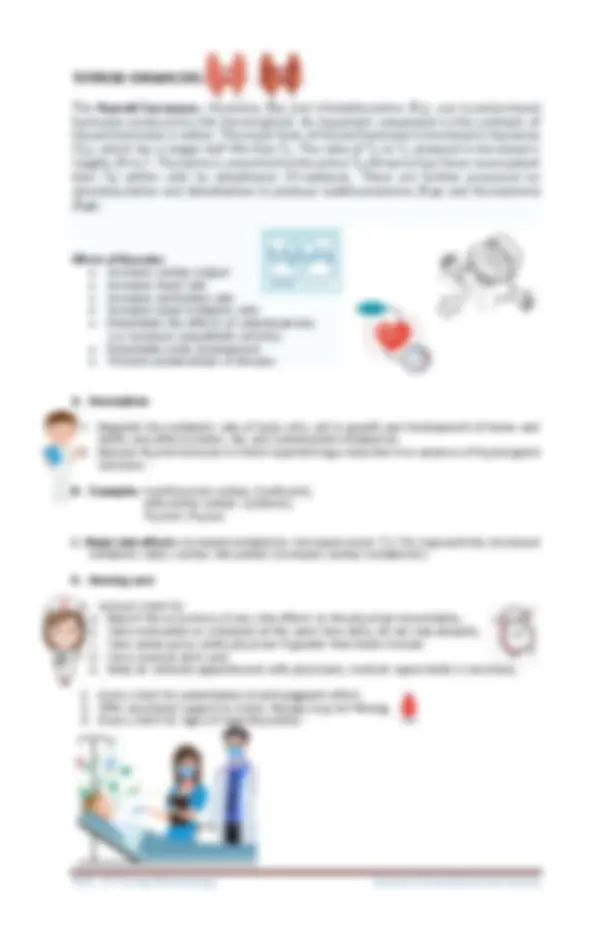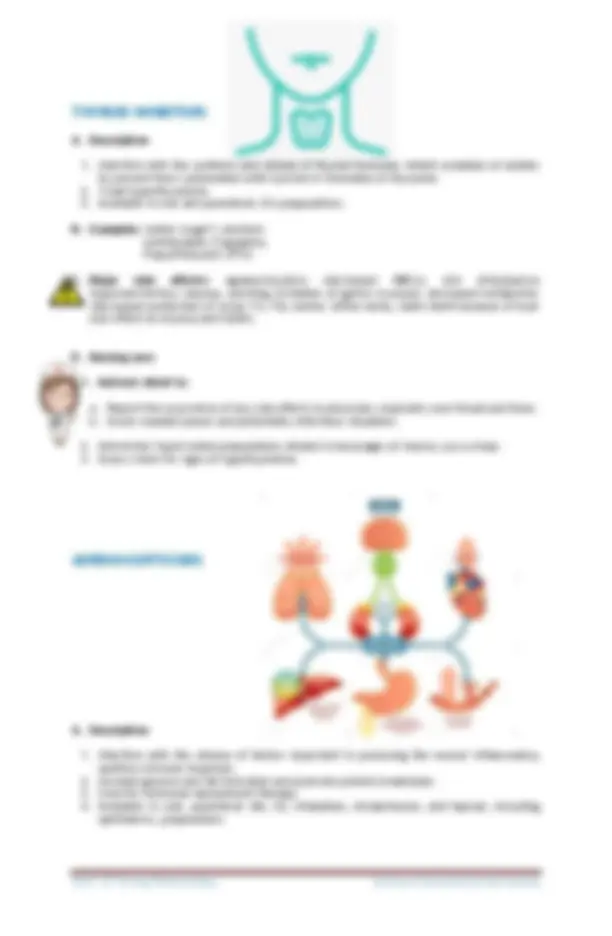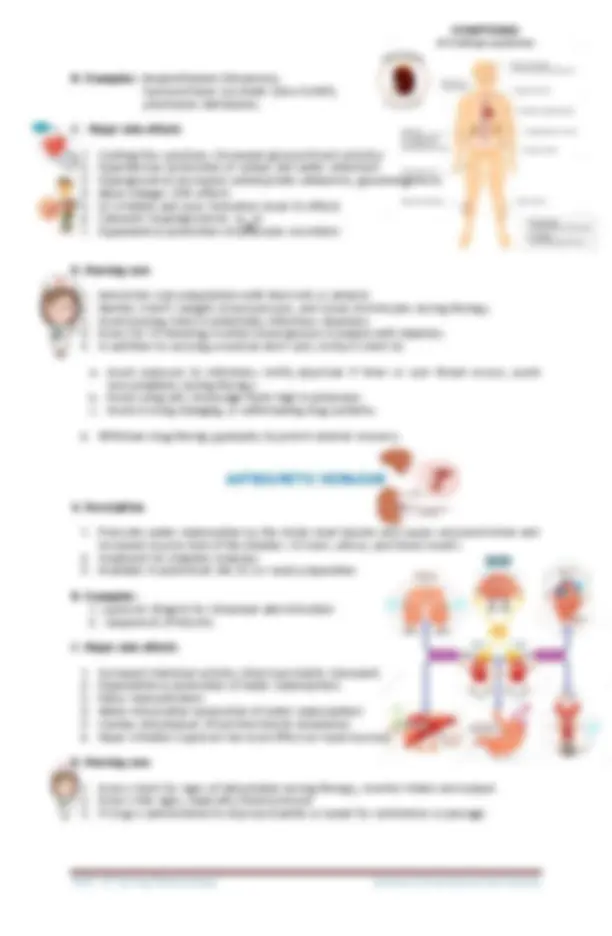





Study with the several resources on Docsity

Earn points by helping other students or get them with a premium plan


Prepare for your exams
Study with the several resources on Docsity

Earn points to download
Earn points by helping other students or get them with a premium plan
Community
Ask the community for help and clear up your study doubts
Discover the best universities in your country according to Docsity users
Free resources
Download our free guides on studying techniques, anxiety management strategies, and thesis advice from Docsity tutors
MODULE 3.4 - ENDOCRINE LECTURE NOTES
Typology: Lecture notes
1 / 5

This page cannot be seen from the preview
Don't miss anything!




A. Description
1. Used to manage/treat diabetes mellitus 2. Classified into two types: insulin for parenteral use and oral antidiabetics 3. Insulin a. Acts to facilitate the transport of glucose across the cell membrane and to promote glycogenesis. b. Available in three forms: human, beef, and pork --human and purified pork insulins are less antigenic; --administered parenterally --brands and forms should not be substituted without medical supervision. c. Available in rapid-acting, intermediate-acting, and long-acting forms --rapid-acting and intermediate-acting forms are available in mixed preparations (e.g., Humulin 70/30, which contains 70% NPH and 30% regular insulin). 4. Oral antidiabetics a. Require some functioning beta cells. b. Lowers serum glucose in variety of ways depending on the drug. **B. Examples
A. Description
A. Description
B. Examples: dexamethasone (Decadron); hydrocortisone succinate (Solu-Cortef); prednisone (Deltasone). C. Major side effects
A. Description